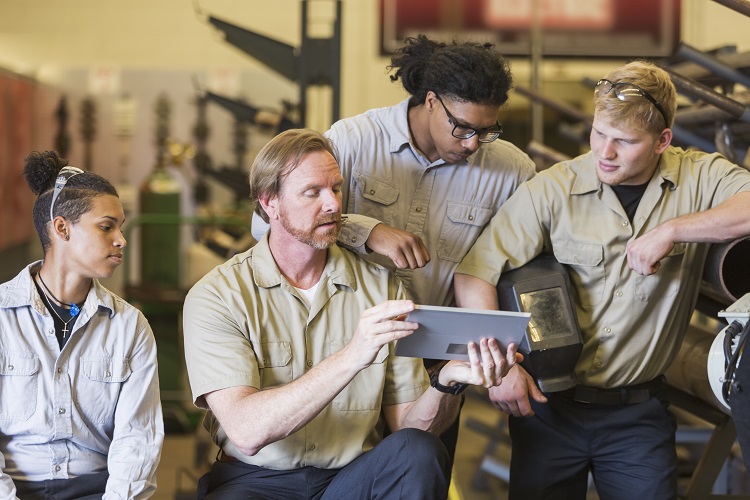Leadership Strategies that Create Engaged Employees

The demands that today’s ever-changing manufacturing world puts on supervisors, managers, leaders, and business owners can be enough to make their heads spin. At least that’s how it often felt to me during my years in multiple manufacturing leadership roles.
However, it was not all stress. I really enjoyed the teams and employees I worked with. They loved coming to work and were engaged. I've heard too many people say that today’s generation doesn’t want to work hard, but I disagree. As a leader, supervisor, or manager, it is your responsibility to engage your employees in their work. Before I discuss how to create a work environment that encourages employee engagement, let me say that I believe engaged employees are the key to a successful business.
A former mentor of mine once told me, “Don’t worry so much about who knows and does what on your shift. Focus on understanding and getting to know your employees. Engage them and things will happen.” That was back in the mid 90s when I was a young, inexperienced toolroom lead on 3rd shift, but it still holds true.
Before you try to engage employees, you need to understand what makes them tick. And in today’s work force, where you may have as many as five generations working side-by-side, this can be very different for each person.
Five Generations in the Work Force:
-
Silent, 1925–1945
-
Baby Boomers, 1946–1964
-
Gen X, 1965–1979
-
Gen Y or Millennials, 1980–1999
-
Gen Z, 2000–Present
What are some things you as a leader can do to engage your employees?
Engage your team:
-
Spend time getting to know each of your employees and find out what motivates them.
-
Listen to your employees and try to understand what they are saying. Don’t judge or fake the listening part.
-
Find your most positive employees and have them help you engage the rest.
-
Put your already engaged employees in positions of influence. Let them lead teams and work groups. If they succeed, give them praise and more responsibilities.
Build trust and respect:
-
Stop unknowingly creating tension by playing employees against each other.
-
Act fairly, applying company policies consistently across your team. Hold everyone to the same standards, and don't play favorites.
-
Be honest with your team. Don’t lie to them. If you don’t know something, say so. If you must apply a corrective action, don’t pass the buck or blame the system. Take responsibility for managing your team.
-
Treat your team with respect.
-
Don’t ask your employees to do things you wouldn’t do yourself.
-
Support your team. Sometimes your employees don’t need answers, they just need support.
-
Do not pit one generation against the next. Even within generations, don’t generalize. Your staff is made up of individual people, and they should be treated that way.
Communication:
-
Clearly define your vision. Explain employee roles and why they are all important.
-
Communicate often and well, customizing your communication to the individual employee. Be sure to explain the big picture and why things need to be achieved or done a certain way.
-
Don't judge or blame your employees if they fail. Instead, coach them and encourage more out-of-the-box thinking and creative action.
-
Coach for success and build a relationship of mutual trust. Ask questions and help your employees.
-
Ask your team for feedback on how things can be done better or more effectively. Also, ask what you can do better and take the feedback seriously.
-
Say "thank you."
Empower your team:
-
Empower your employees to discover, and let them make decisions on their own. Tell them the results you need rather than giving step-by-step orders.
-
Utilize and focus on your employees' strengths and coach them on their inefficiencies.
-
Give employees what they need to be successful. This could be tools, training, reassurance, praise, or constructive feedback. Understanding your employees will help you know what each employee needs from you.
This list is by no means complete or a one-size-fits-all solution. It’s simply meant to give you ideas on how to engage your employees. If you don’t truly believe engaged employees will benefit the company's overall success, they will know. You are their leader and they see and analyze what you do, what you say, and how you are acting around them. If your actions don’t mimic your behavior or words, you will be viewed as being fake and your employees will not engage.
An insurance company that cares about you and insuring the things you wish to be insured.
Get a Quote> Find an Agent>

